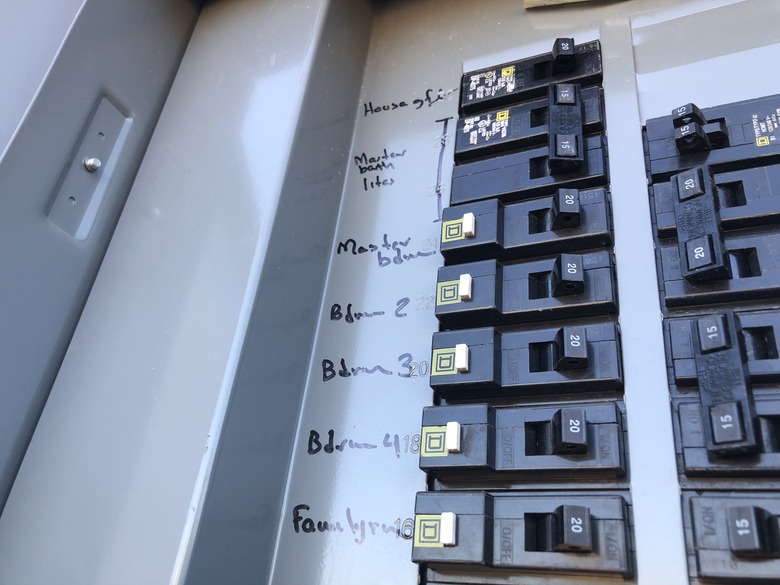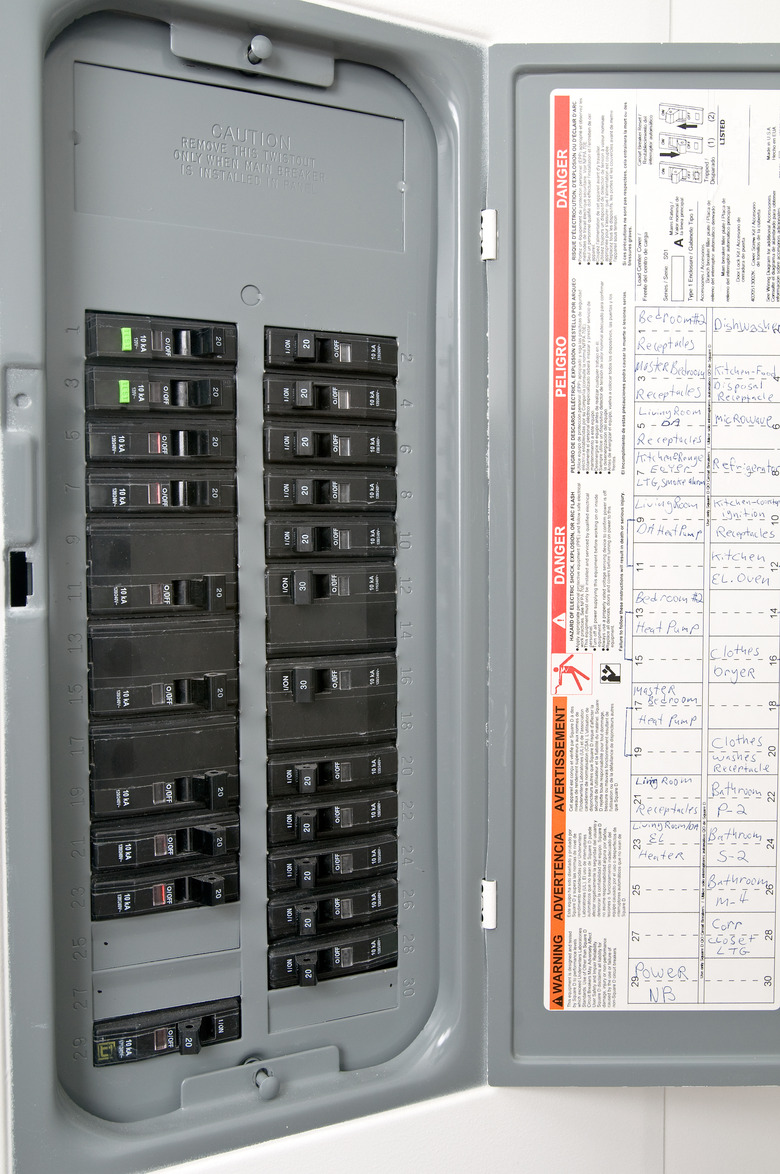How To Install A New Or Replacement AFCI Breaker
We may receive a commission on purchases made from links.
Ever since the arc-fault circuit-interrupter (AFCI) receptacle made its first appearance in 1999, the National Electrical Code (NEC) has required it in more and more places in dwelling units. Today, it's required in so many places that it makes more sense to protect each branch circuit with an AFCI breaker in the panel than it does to install AFCI receptacles throughout the house. Compared to a conventional circuit breaker, an AFCI circuit breaker is fairly pricey ($40+ as opposed to about $10), but it's still cost-effective because it protects the entire circuit, and it allows homeowners to install conventional receptacles on the circuit instead of more expensive AFCI ones.
NEC code changes apply to all new construction and remodels, but a homeowner is not required to retrofit existing wiring, so many homes lack the protection that an AFCI breaker or receptacle offers. Since the number-one concern of the electrical code is safety, it pays to rethink your laissez-faire attitude if your home is one of these.
Tip
Replacing a breaker involves working in the service panel, which is normally a job for an electrician and should only be undertaken by homeowners with a knowledge of basic wiring and the layout of a service panel. If you have that knowledge and you follow essential safety precautions, you shouldn't have any problems.
What Is an AFCI Breaker?
What Is an AFCI Breaker?
Similar to a ground-fault circuit-interrupter (GFCI), a type of receptacle or breaker that has been around a lot longer, an AFCI has an internal breaker that trips when it detects a current surge that could cause electrical arcing. An example of arcing conditions would be a loose ground wire inside a switch box that can come in contact with the hot terminal of the switch. Even before the wire actually touches the terminal screw, electricity can arc between them, much like lightning arcs between a charged cloud and the earth. Arcing releases more than enough heat energy to melt wiring insulation and start a fire.
An AFCI breaker contains a sensor that detects the current leakage that causes arcing even before the arcing happens, and the breaker trips and shuts off the electricity. The sensor can detect as little as 30 mA of current leakage. It's the same process that happens inside a GFCI when it detects the current surge of a ground fault, but the main function of a GFCI is to prevent electrocution, while that of an AFCI is to prevent electrical fires. Both install the same way. The NEC requires both types of protection in several areas of the house, so dual-function GFCI/AFCI breakers that provide both ground-fault and arc-fault protection are becoming standard. The procedure for installing them is the same as it is for conventional AFCI or GFCI breakers.
AFCI breakers are the same size and shape as conventional breakers. They have the same amp ratings, and they fit in the same slots in the panel, but they have two key differences. The first is a test button that allows the homeowner to make sure the current sensor is working, and the other is a white neutral wire (a coiled white "pigtail" wire). The sensor needs that wire to form an internal circuit so it can operate, and the wire makes installation a little more complicated than that for a conventional breaker but not much. The difference is that you have to connect the circuit neutral wire to the breaker instead of the panel, and you connect the breaker's white pigtail to the panel's neutral bus.
Important Safety Considerations
Important Safety Considerations
Before installing or replacing any breakers in the panel, you should shut off the main circuit breaker to cut electricity to all the other breakers in the panel.
Warning
Shutting off the main breaker de-energizes the metal bus bars to which the breakers are connected, but it does not de-energize the two hot service wires coming into the panel from the utility or the lugs where the wires connect to the main circuit breaker. These parts are always live unless the utility shuts off your service, so stay away from them when working inside the panel.
Before proceeding, make sure the panel has no power by touching several of the hot wires leading to branch breakers with the tip of a noncontact voltage tester. It should not detect voltage on any hot circuit wire or on the bus bars. For additional safety, use tools with insulated handles and wear rubber-soled shoes to prevent your body from forming an electrical ground path.
Things Needed
-
Rubber-soled shoes
How to Install or Replace an AFCI Breaker
1. Turn Off the Main Breaker
Open the panel door, locate the main breaker and turn it off. This will cut power to the entire building, so if you're indoors, you'll need a good headlamp to see what you're doing from here on out.
2. Remove the Panel Cover
Most panel covers are held by screws at the top and bottom. After you remove all the screws with a Phillips screwdriver, you should be able to lift out the cover, but sometimes, you have to angle out the bottom and lift to disengage tabs at the top that are still holding it.
3. Test the Wires
Using a noncontact voltage tester, touch the tip to several hot wires in the panel to make sure they are dead.
4. Remove the Existing Breaker (Optional)
Remove a breaker by grasping its edges and pivoting it outward and away from the center of the panel. If it's stuck, you may have to use lineman pliers to grab the breaker toggle for leverage. Alternatively, some breakers have a notch on the end closer to the middle of the panel that allows you to pry that end up with a screwdriver. Remove the hot (typically black but sometimes red) wire attached to the breaker by loosening the lug on the breaker with a screwdriver and pulling out the wire.
5. Prepare the Wires
If you're installing a new circuit, feed the circuit cable in through a hole in the side or bottom of the panel and pull out enough slack to reach the slot where the breaker goes as well as the ground bus, which is the bar to which all the ground wires are connected. Using a utility knife, remove enough cable sheathing to allow the white and black wires to reach the breaker slot and the ground wire to reach the ground bus. Strip insulation from the ends of the white and black wires using wire strippers. Use the strip gauge on the breaker to determine how much to remove.
6. Connect the Circuit Neutral Wire to the Breaker
Switch the AFCI breaker you're installing to the "off" position. Identify its two terminals. One breaker terminal is labeled "load neutral" or "white," and the other is labeled "load power" or "black." Connect the white neutral circuit wire to the load neutral terminal by loosening the lug, inserting the wire and tightening the lug to secure the wire using a screwdriver. Be sure to get the lug very tight. If you're replacing an existing breaker, remove the white wire for that circuit from the neutral bus and connect it to the load neutral terminal of the breaker.
7. Connect the Breaker Neutral Pigtail to the Panel
Loosen the lug on an available slot on the neutral bus, insert the white coiled neutral pigtail wire leading from the breaker and tighten the lug. Be sure to use an open slot for the pigtail; never connect more than one wire to a single slot.
8. Connect the Hot Wire and Ground Wire
Loosen the lug that says "load power" on the breaker, insert the black hot circuit wire and tighten the lug. Connect the circuit ground wire to an available lug on the ground bus if it isn't already connected.
9. Install the Breaker in the Panel
Snap the breaker into the open slot on the panel. You usually do this by hooking the outside end to a tab and pushing down on the other end until the breaker snaps into place on the hot bus bar. The new breaker should be flush with the surrounding breakers; if it's not flush, it's not fully seated in place.
10. Replace the Cover and Restore Power
Fit the panel cover back in place and secure it with its screws. Turn off all the branch circuit breakers. Turn on the main breaker to restore power to the panel and then turn on each branch breaker one by one. Push the test button on the new AFCI breaker; this should trip the breaker, indicating proper wiring and breaker function. Press the AFCI's reset button to reset the breaker. If the AFCI is feeding a new circuit, don't forget to label the breaker before you close the door.

